×

Halloween Leaf Bats Made from Maple Leaves and Upcycled Egg Cartons
DIY eco-friendly Halloween decor: Make cute bats using maple leaves & egg cartons—no craft store needed! Perfect for adding a natural touch to your spooky setup.
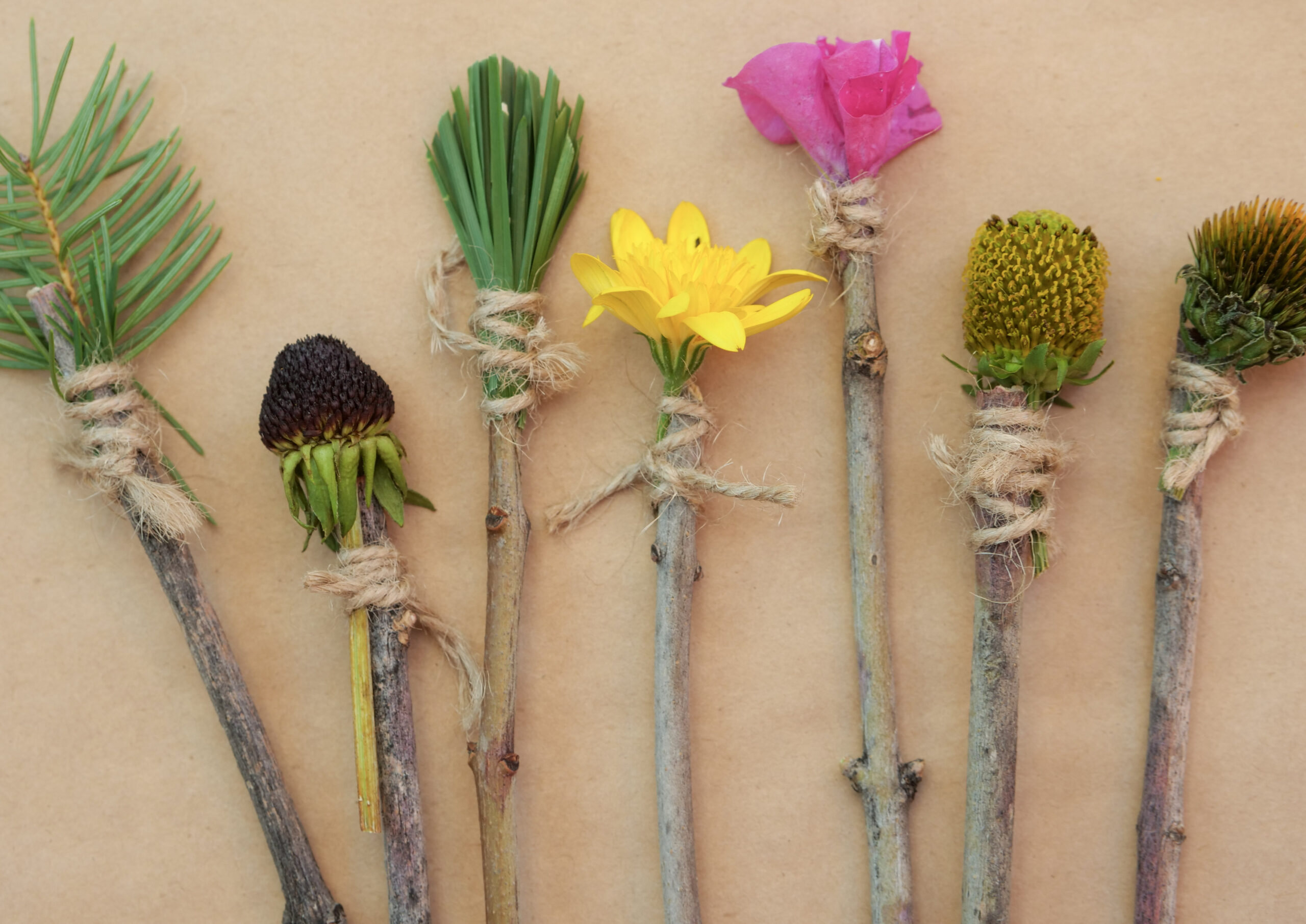
It might seem silly to be sharing a tutorial on making nature paintbrushes for kids. After all, paintbrush have been made from natural materials for thousands of years! According to Britannica, paintbrushes are one of human’s earliest art supplies and were used as early as the Paleolithic Period. Back then paintbrushes were made from animal hair, sticks, feathers, plant fibers and whatever else people had on hand at time.
But these paintbrushes aren’t your typical painbrushes—these nature paintbrushes stimulate children’s creativity and explorations of the wild close to home.
Activity Time: 10-20 minutes to make; 20–30 minutes to paint
Ages: 2+ with help tying and cutting for younger children
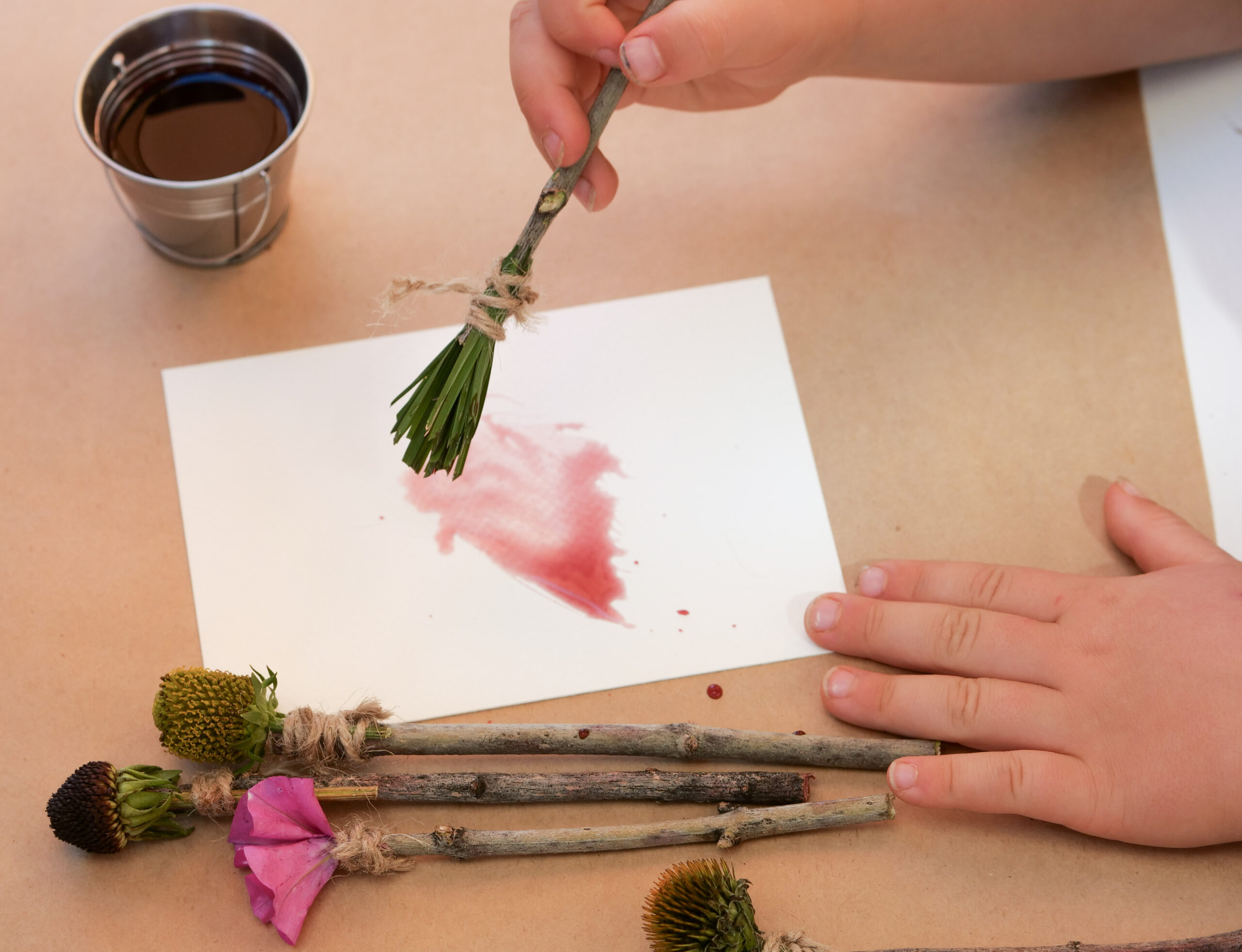
Nature paintbrushes invite children to explore textures in nature—from collecting the materials to exploring how different bits of nature “paint”—this simple nature activity stimulates a child’s sensory system in a gentle and meaninful way.
Nature paintbrushes also help children develop their fine motor skills. Picking and plucking materials, and holding the paintbrush develops the pincer grasp which is important for writing.
Twine or cotton string (keep it compostable)
Natural “bristle” options: flower petals, coneflower heads, grasses, dandelion flowers, evergreen clippings, pliable leaves
Child-safe scissors
Washable paint (tempera or watercolor)
Water cups (for rinsing paintbrushes)
Paper or cardboard

✨ Looking for more ways to connect your family with nature? My book, Beyond the Front Door: Embracing Nature for Healthier and Happier Families, is packed with seasonal activities, inspiration, and simple ways to bring the outdoors into everyday life. Coming February 2026 — stay tuned for updates!
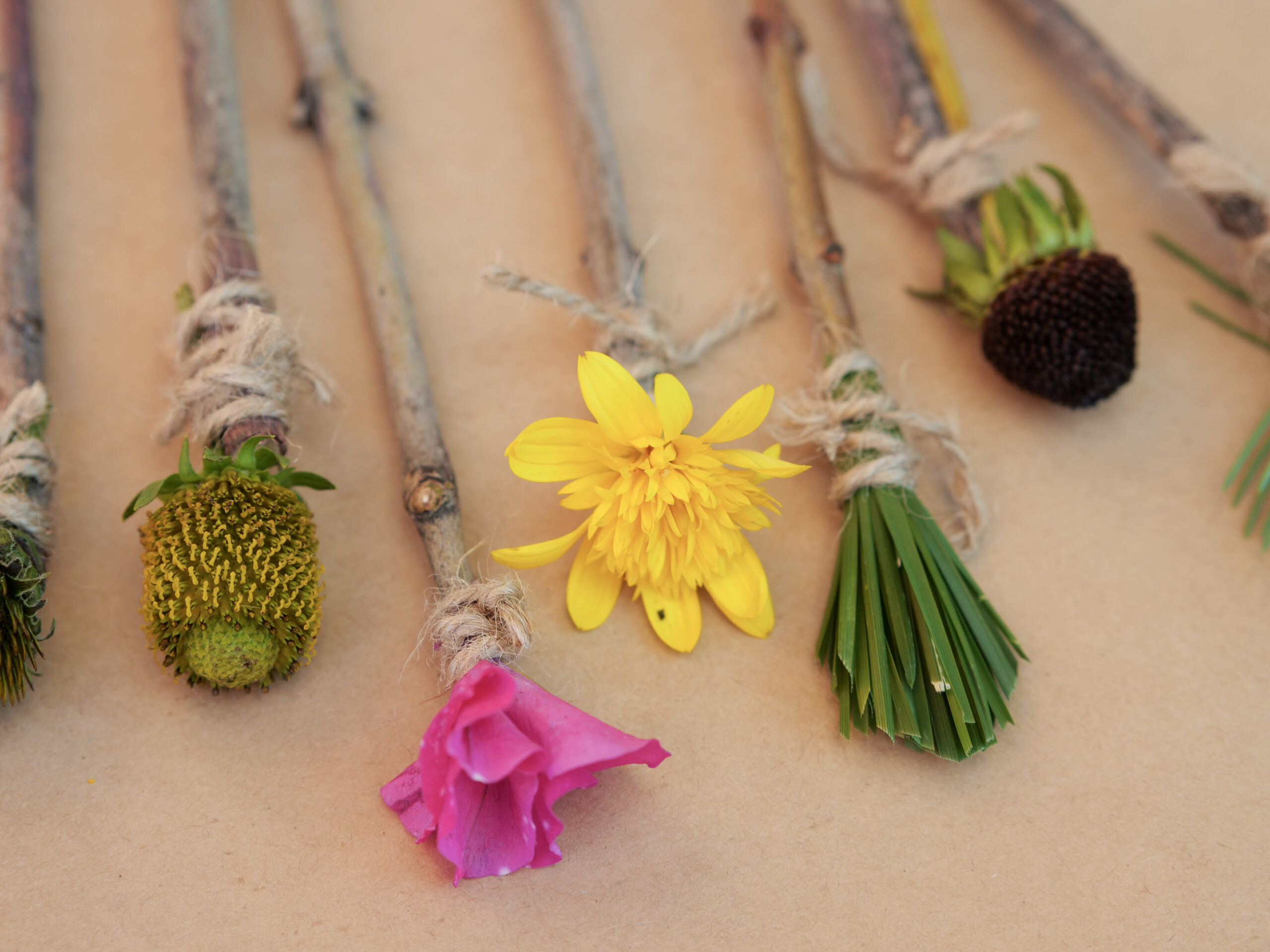
Spring: Think soft and new—dandelion flowers, fresh meadow grass, and tree blossoms (apple or cherry) that have already fallen. Fern tips are lovely if you can take the tiniest clip. Try pussy willow catkins, willow whips, spent tulip or daffodil petals, and even chive blossoms!
Summer: Go big on texture—long meadow grasses in a few widths, clover flowers, lamb’s-ear leaves (so soft), lavender or rosemary sprigs, nasturtium blossoms, and daylily petals. coneflowers are perfect—the center “cone” makes a fabulous stippling brush, and sunflower petals swipe beautiful streaks. reeds or rushes tie in easily, and a puff of cattail fluff (if you have it) turns into a dreamy cloud brush.
Fall: Embrace seeds and color—milkweed seeds with their silky floss are pure magic. Gather colorful leaves, dried grasses, and seed heads from coneflower, black-eyed susan, and asters. Hydrangea heads and ornamental grass plumes make dramatic marks. maple keys and wheat/rye stems (post-harvest) are fun too, think whiskers, dots, and fans.
Winter: Evergreen time—cedar, fir, and pine tips (small clippings) hold together beautifully. Soft hemlock tips are lovely; spruce works too, just watch for pokes. Dried grasses and seed heads that overwinter still paint well. Try tying on a small pinecone sideways for a stamp-brush, add a fallen feather, or use windfall moss from downed branches.
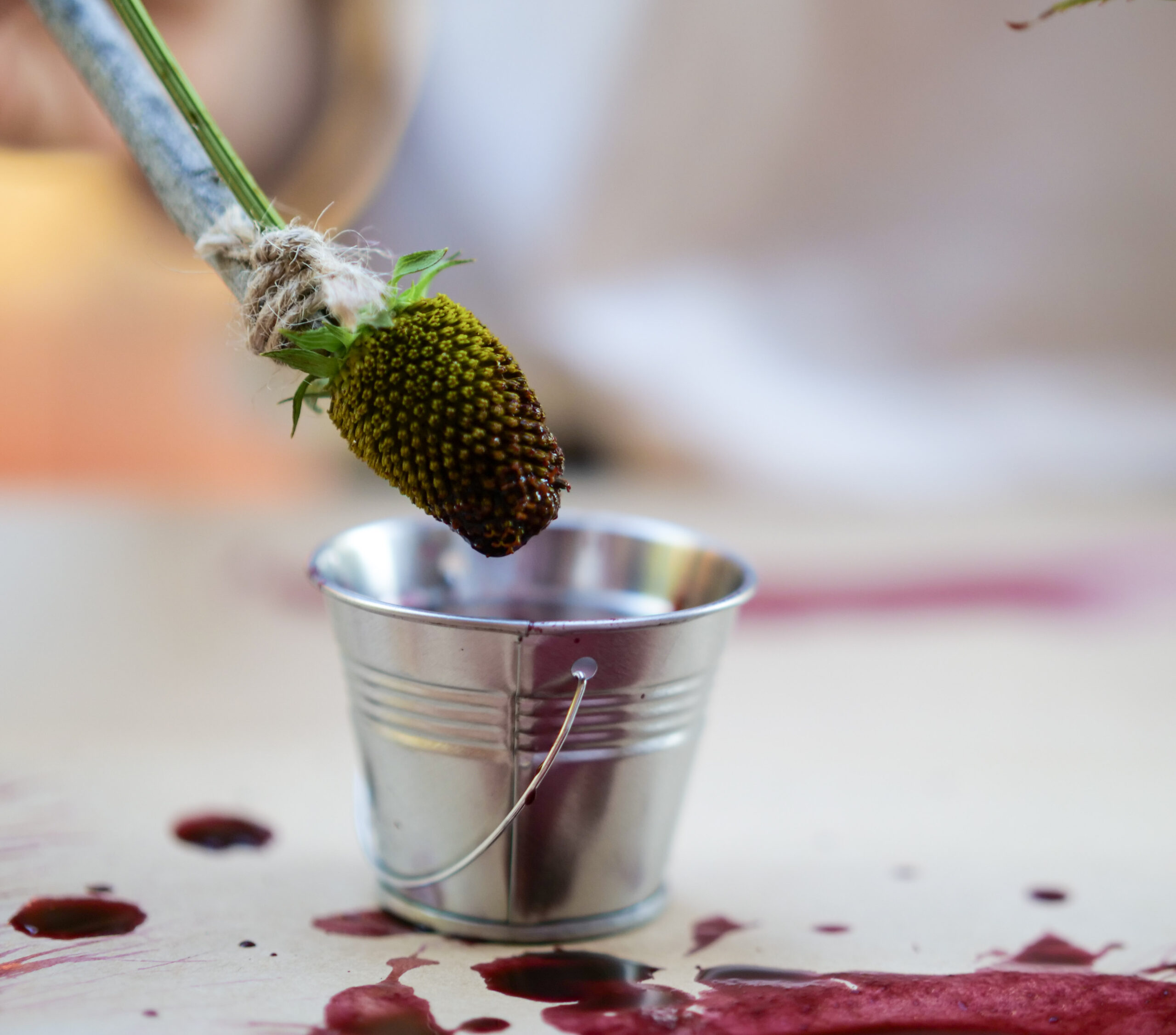
Start close to home. Your yard is perfect. A friendly neighbor might say yes too. Out on Crown land is often fine for casual gathering, just keep an eye out for signs and local rules.
Skip the “no-pick” places. Parks and protected areas are for looking, not snipping. Same goes for public gardens and private property unless you’ve been given permission.
Take a little, leave a lot. Grab small amoutns from several plants rather than a lot from one. Fallen sticks and spent blooms are gold, use those first.
If in doubt, leave it out. Not sure what a plant is? Pass. You can double-check with iNaturalist (so handy!) and a local field guide before you harvest.
My bundle keeps slipping.
Tie the bristle close to the stick tip and wrap it several times, tightly. If you’re really struggling try some elastic bands to hold the bristle in place.
The brush feels too floppy.
Shorten the bristles, add a stiffer piece (a few grass stems or a small evergreen clipping), or switch to a slightly thicker stick for a better grip.
Bristles are breaking or falling apart.
Choose flexible, fresh materials (not brittle).
My child lost steam—now what?
Try quick prompts: “Make ten different marks,” “Paint your name with three brushes,” or a big-paper team mural for instant momentum.
How do you make a nature paintbrush for kids?
Bundle nature bits at one end of a stick, wrap tightly with twine or cotton, double-knot, and paint. Simple and satisfying.
What paint works best?
Washable tempera or watercolors work great.
Can I make them without twine?
Totally. Try cotton to keep it eco-friendly, but rubber bands work well too.
Are these reusable?
It depends. Delicate bristle materials like petals won’t last more than one paint session but more durable materials like grass, evergreen tip, coneheads will last multiple paint sessions. The sticks are defintely resuable though! When your child is done with the paint brushes (for good!) ompost them (twine and cotton will decompose, but elastics need to be removed before composting).
What ages is this for?
Ages 2+ with help tying and snipping. Older kids can design and test their own nature paint brushes.
How do we store them?
Hang to dry bristles-down, then keep in a jar bristles-up. Remake as needed, half the fun is trying new textures.
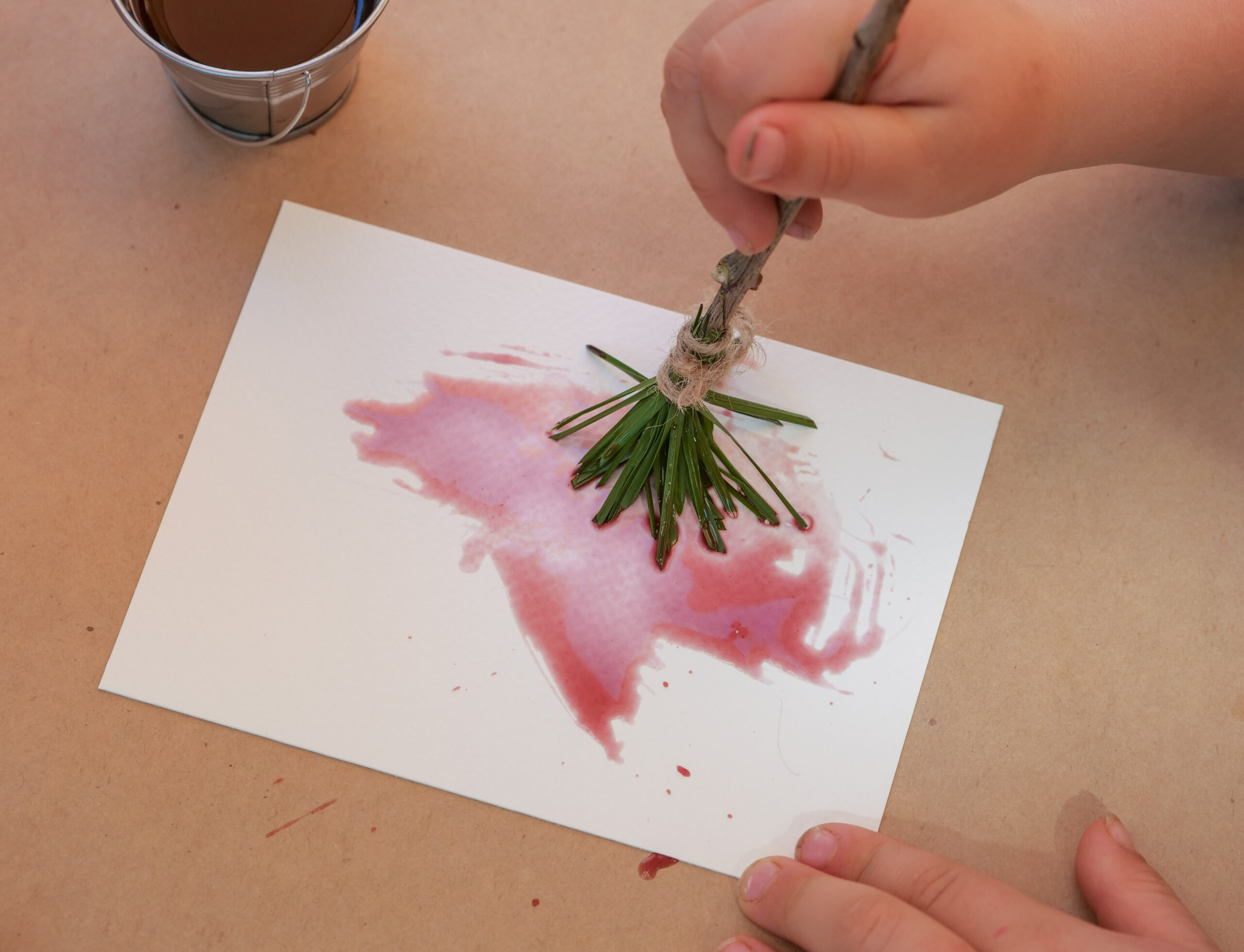
Tried it? I’d love to hear about your favorite nature brush made. Drop a note in the comments so other families can borrow your ideas.
Want simple, seasonal nature activities in your inbox? Join my newsletter for fresh micro-adventures, easy crafts, and gentle nudges to get outside together. Sign up here!
Share your masterpieces! Tag @thebackwoodsmama on Instagram or Tiktok so I can cheer you on and share a few favorites.
Ready for your next make? Set up a mud kitchen or make a willow nature crown,—perfect companions to these brushes.

DIY eco-friendly Halloween decor: Make cute bats using maple leaves & egg cartons—no craft store needed! Perfect for adding a natural touch to your spooky setup.

Mud. Ooey gooey squishy goop that forms when dirt and water mix together. Mud has a magnetic force on children. It beckons them to scoop and slide their way into a magical and messy world of play. Books about mud are fun too, and that's what this post is all about!...

Spring is flowers blooming, birds building nests, green grass growing and rainbows after rainstorms. This season offers a kaleidoscope of inspiration and new abundance for nature-inspired crafting. In our home, spring crafting is approached with the earth in mind. My...

Birds, with their songs, flight and feather, fill children with awe. Perhaps it's a robin collecting worms from dewy grass or the woodpecker tuk-tuk-tuking a nearby tree that first catch a child's attention, but once caught a world of wonder is opened. Noticing birds...
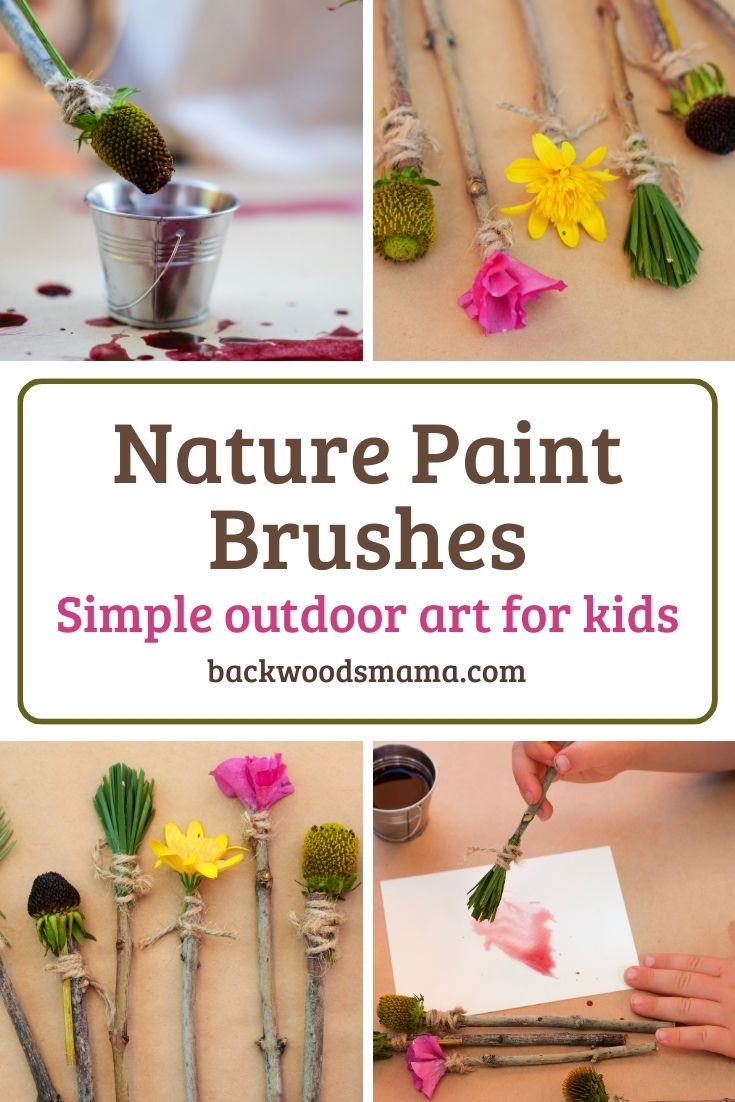
0 Comments